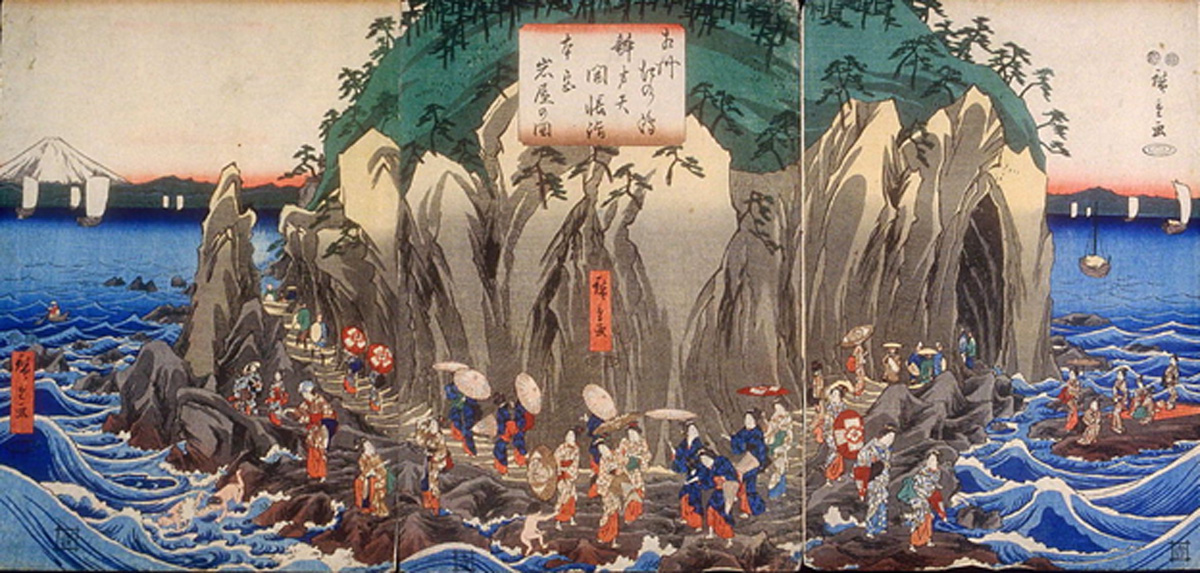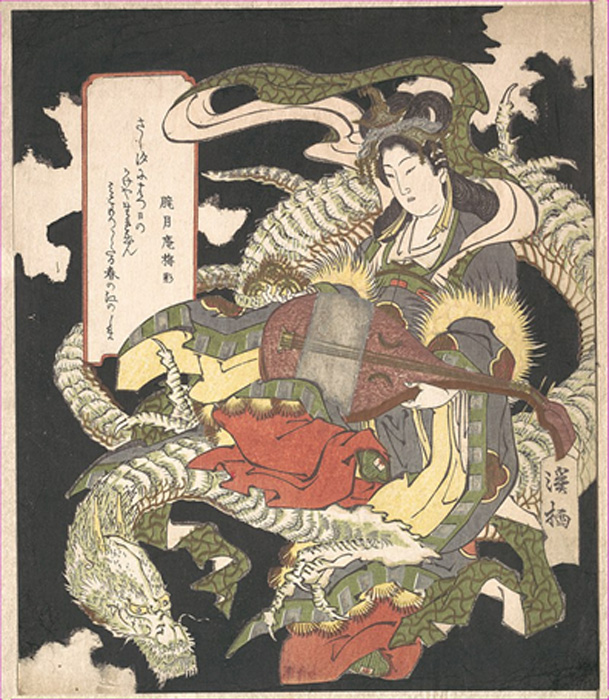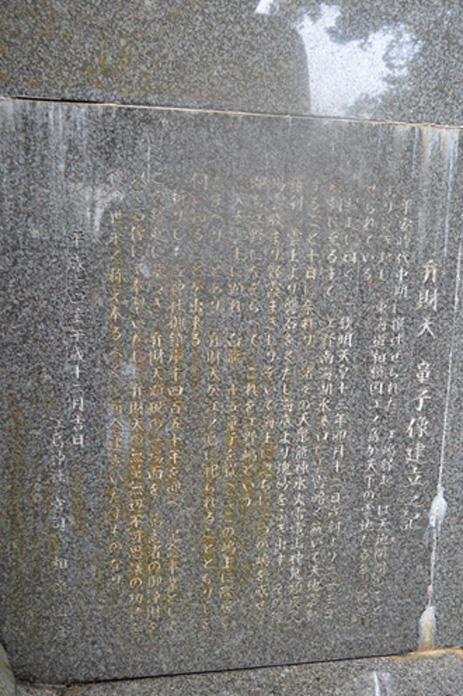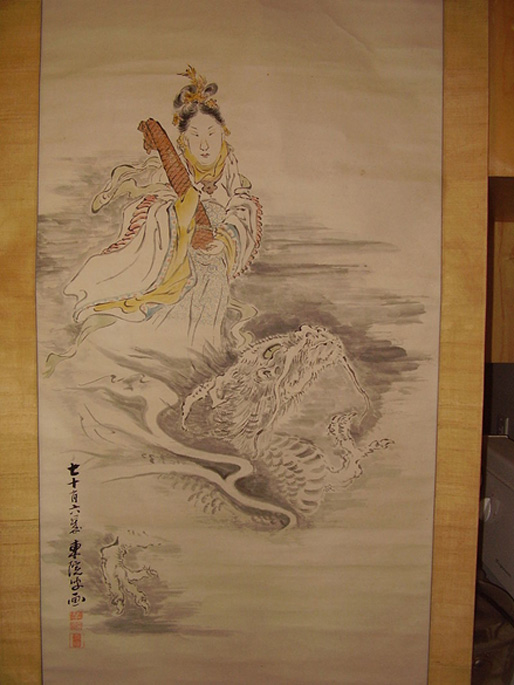
Benzaiten, Japanese War Goddess Transformed into Water Goddess of Music
Benzaiten is one of Japan's most complex and popular syncretic deities who has long ago been conflated and associated with other divinities from the Hindu, Buddhist, and Japanese pantheons. Her many forms range from a two-armed beauty playing music to an eight-armed martial deity holding weapons and a divine representation of the supreme Shinto sun goddess, Amaterasu. Benzaiten is also an agricultural deity invoked for rain and harvests. This patronage earns her a place as one of the shichifukujin (‘Seven Gods of Fortune’) which includes Ebisu (patron of fishermen as well as the god of prosperity and wealth in business), Daikokuten (patron of cooks, farmers and bankers as well as the god of commerce and prosperity), Bishamonten (patron of warriors and the god of fortune in battles), Fukurokuju (patron of chess players and the hermit god of wisdom, luck, wealth and happiness), Jurojin (the cheerful god of longevity), Hotei (patron of children and barmen as well as god of popularity), and Benzaiten herself who serves as the patron of warriors, artists, writers, dancers and geisha.

Benzaiten (Goddess of Music and Good Fortune) Seated on a White Dragon (CC0)
Although a quick glance of some of Benzaiten’s aspects, such as her role as protectress of a city and her relationship with culture, may remind people of ancient Greece’s goddess of wisdom Athena, Benzaiten’s character is very closely based on the Indian goddess Sarasvati, who is celebrated both as a river and a goddess. The tradition of Sarasvati or Benzaiten as water goddess has not been lost in Japan as thousands of Benzaiten’s places of worship are often located near water - the sea, a lake, a pond or a river. Philologist Sir William Jones describes Sarasvati also as the goddess of eloquence, learning and writing - in short, of culture. She is adored as the patroness of the fine arts, especially of music and rhetoric, as well as the inventor of the Sanskrit Ianguage and of the sciences which writing perpetuates. The seven notes in music, an artful combination of which constitutes music and variously affects the passions, are also believed to be her earliest creation.

Benzaiten Stele (Enoshima Shrine) (CC BY-SA 3.0)
Benzaiten, the Eloquent Goddess Protector of the City
The history of Japan’s city of Enoshima began when the Buddhist monk Kokei (977 – 1049 AD), a priest of the dominant Tendai sect in the mid-Heian period, wrote a tale in Chinese letters in 1047 AD about the creation of Enoshima and the city’s relationship with Benzaiten. The Enoshima Engi, a history of the temples and shrines on Enoshima, which Monk Kokei completed two years before his death, presented the goddess both as a protector of the state and as a savior of the people. Enoshima villagers were haunted for a thousand years by a destructive five-headed dragon that had its lair in a nearby swamp. Aware of the people’s suffering, Benzaiten caused the island of Enoshima to rise from the sea in 552 AD to serve as her home, keeping the islanders away from the dragon, as well as enabling her to live on the island herself and be at hand to help the people when needed. Seeing her for the first time, the dragon fell in love with the goddess and asked her to be his consort. Widely known for her gentle yet persuasive eloquence, Benzaiten rejected the proposal and made the dragon understand that he had done a terrible thing in plaguing the villagers. Rejected, but not discouraged, the dragon devotedly faced south toward the island of Enoshima where Benzaiten lived and turned into a hill known today as tatsu-no-kuchi yama (‘Dragon’s Mouth Hill’).

Benzaiten, carrying a wrapped koto and standing on a dragon; late 19th to early 20th century, late Meiji era (Public Domain)
An anonymous 10th-century Noh play entitled Chikubushima portrays a court official of the late 9th century who is undertaking pilgrimage to the island to make his offerings to Benzaiten. When he arrives at the lake shore, he sees an old fisherman and a young woman setting out in a fishing boat. The court official calls out and asks if he can accompany them. They agree and, when they reach the island, the fisherman guides the court official to the shrine where he is dazzled by its beauty. However, when the woman walks towards the shrine, the official is offended by the visit of such an ordinary woman of low class to such a sacred site. The old man gently rebukes him and says that the goddess does not discriminate the social status as well as the gender of those who comes to visit her as Benzaiten is a woman herself.




